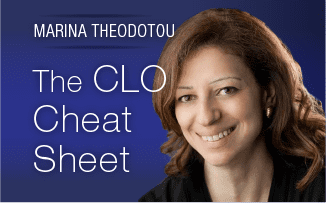Research conducted by Harvard Business Review shows that one of the biggest concerns for CEO’s in Fortune 500 have is developing the right talent. That talent will come from tomorrow’s K-12 students.
The issue is, what drives a high achieving talent pool? Learning and development leaders would naturally say the quality of the learning and development programs they offer. But what about all the learning talent receives before arriving in a specific organization?
What if we went as far back as primary and secondary education? What drives K-12 achievement? While the answer to this question is quite complex and beyond the scope of this blog, one component of student achievement deserves attention: professional development programs for K-12 teachers. If misalignment of learning to strategy is a challenge for the L&D community, it is gargantuan for the K-12 professional development arena because of the relative lack of data and research. The most recent research study conducted by the U.S. Department of Education is dated in 2007 yet it shows a significant metric that is still relevant today: teachers who receive quality professional development can positively impact student achievement by 21 percentile points.
Corporate learning leaders traditionally focus on developing and delivering quality learning and development programs for their organization’s talent to increase performance, productivity and profitability. In the K-12 world, school principals focus on developing and delivering quality professional development programs for teachers who teach the K-12 students who become the talent pool CLOs care most about.
 Today, CLOs and corporations collaborate heavily with universities on this topic, but they do not seem to engage much, if at all, with the primary and secondary school principals and K-12 teachers. Yet, that is perhaps where the conversation and the collaboration should begin.
Today, CLOs and corporations collaborate heavily with universities on this topic, but they do not seem to engage much, if at all, with the primary and secondary school principals and K-12 teachers. Yet, that is perhaps where the conversation and the collaboration should begin.
One of the biggest challenges in K-12 teacher professional development is funding. While several corporates and foundations offer scholarships to teachers, there is a significant gap in funding and access to professional development programs for K-12 teachers. The return on investment for K-12 teachers’ professional development is 25x. Many corporates miss this multiplier effect by investing only in individual students’ education. Whereas a teacher can impact more than 25 students at a time, and increase their academic achievement by 21 percentile points each.
Who in corporate learning is best positioned to begin this specific conversation? The chief learning officer, of course. What if learning leaders started a specific and grounded conversation with teachers’ associations and school principals and K-12 teachers around the intersection of L&D and professional development on key areas of learning that K-12 students/tomorrow’s talent pool will need to succeed in the knowledge economy?
A conversation, if not a collaboration between to these two groups, could be game-changing at many levels starting with best practice sharing, articulating skill needs for today’s K-12 students/tomorrow’s talent pool, and identifying gaps in professional development for K-12 teachers and learning and development that can help address many critical issues in the education and corporate realms, including diversity and inclusion, access and equity.
Marina Theodotou is the director for professional development at the Computer Science Teachers Association. Comment below, or email editor@CLOmedia.com.















